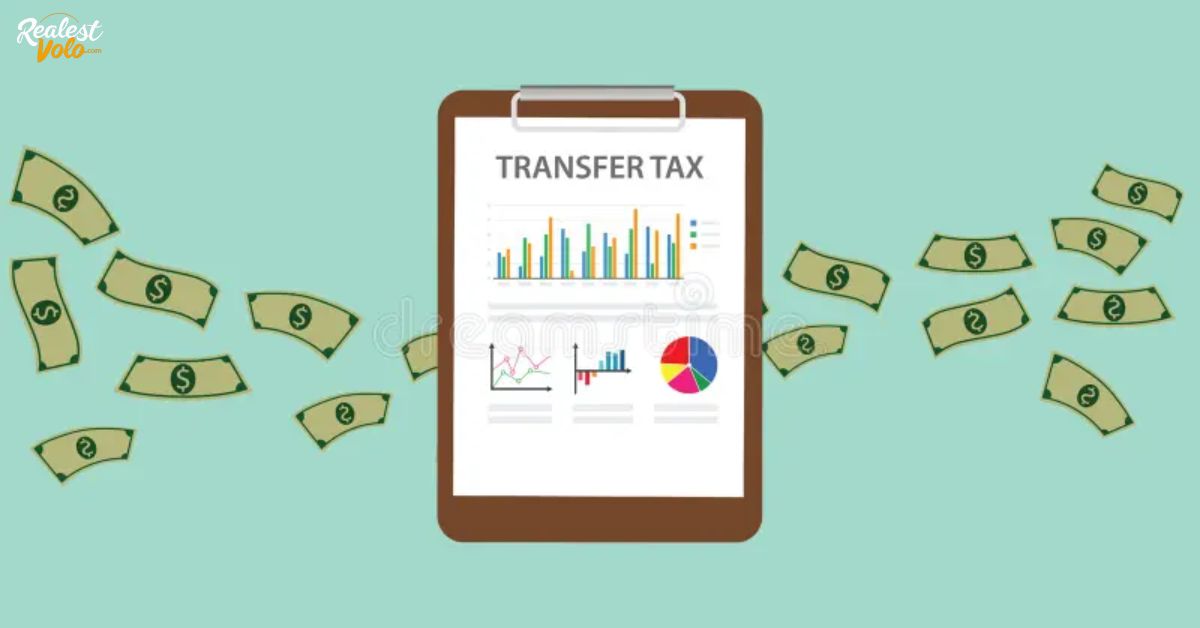Investing in real estate can be a lucrative endeavor, but timing is crucial. As we approach 2024, the question on many investors’ minds is whether Mexico presents a promising opportunity for property investment.
In this comprehensive analysis, we’ll explore the current state of the real estate market in Mexico, examining factors that could influence your investment decisions.
Buying Real Estate in Mexico?
Mexico, a nation rich in cultural heritage and natural beauty, has long attracted foreign investors seeking to capitalize on its property sector. Before venturing into the Mexican real estate market, it’s essential to understand the current economic landscape and property ownership dynamics.
How is the Property Market in Mexico These Days?
Mexico is, Today, a Relatively Stable Country
Despite the challenges posed by the COVID-19 pandemic, Mexico has demonstrated resilience in its economic recovery. The country’s political stability and ongoing efforts to attract foreign direct investment have bolstered its reputation as a relatively secure destination for property investment.
According to the World Bank’s Worldwide Governance Indicators, Mexico ranks in the 60th percentile for political stability, indicating a relatively stable environment for real estate transactions and land acquisition source. This stability is crucial for foreign investors and international buyers considering long-term commitments in the Mexican property sector.
Mexico Will Keep Growing
According to the International Monetary Fund (IMF), Mexico’s Gross Domestic Product (GDP) is projected to grow by 2.1% in 2024, surpassing the predicted 1.6% growth rate for advanced economies. This economic growth bodes well for the real estate market, as a stronger economy typically translates into increased demand for housing and commercial properties.
Mexico’s diversified economy, driven by sectors such as manufacturing, tourism, and energy, provides a solid foundation for sustained financial progress and development. This economic diversification can help mitigate the impact of industry-specific downturns on the property market.
Mexican Business Owners Have a More Favorable View of the Economy
A survey conducted by the Mexican Institute of Finance Executives (IMEF) revealed that business confidence among Mexican entrepreneurs has been on the rise. This positive entrepreneurial sentiment could spur greater investment in the property sector, as businesses seek to expand or establish new operations.
When business owners have an optimistic outlook on the Mexican economy, they are more likely to invest in commercial real estate, such as office spaces, retail outlets, and industrial facilities. This increased demand can drive up property values and create opportunities for savvy investors.
Also Read: How to buy and own real estate in Argentina as a US citizen
Mexico’s Population is Growing but Getting Poorer
While Mexico’s population growth is a positive factor for the housing market, it’s essential to note that income inequality remains a significant challenge. According to the World Bank, approximately 41.9% of Mexico’s population lived below the national poverty line in 2020. This could potentially dampen demand for higher-end properties but increase the need for affordable housing solutions.
This demographic shift also presents opportunities for investors willing to cater to the growing demand for mid-range and affordable housing options. By understanding the unique needs and purchasing power of different socio-economic segments, investors can strategically position their property investments to meet market demands.
You’ll Get Really Good Rental Yields in Mexico
One of the key advantages of investing in Mexican real estate is the potential for attractive rental yields. According to a report by Global Property Guide, the average rental yield in Mexico City was around 7.7% in 2021, significantly higher than many other global cities. This presents an opportunity for investors seeking steady leasing income and rental profits.
To put this in perspective, the average rental yield in Los Angeles, California, was around 4.2% during the same period, while London, United Kingdom, stood at approximately 3.5%. These comparisons highlight the potential for superior returns on investment in the Mexican real estate market.
Mexico’s thriving tourism industry contributes to the demand for short-term rentals, particularly in popular destinations like Cancun, Playa del Carmen, and Los Cabos. Investors can capitalize on this trend by acquiring properties suitable for vacation rentals, potentially generating higher rental yields during peak seasons.
In Mexico, Inflation is Projected to Increase
While Mexico’s inflation rate has been relatively stable in recent years, the IMF forecasts a moderate increase in inflationary periods in 2024, with consumer prices rising by approximately 4.2%. This could impact property values and home prices, potentially making real estate a hedge against rising costs.
During times of high inflation, hard assets like real estate tend to appreciate in value, as the cost of construction and replacement rises. Additionally, rental income can keep pace with inflationary pressures, providing a potential hedge against eroding purchasing power.
It’s important to note that high inflation can also lead to higher mortgage rates, which could potentially dampen demand for home buying in the short term. Investors should carefully monitor economic indicators and consult with local experts to time their property investment decisions accordingly.
Also Read: Buying Property In Colombia As A Foreigner: A Comprehensive Guide
Real Estate Taxes in Mexico
When considering property investment in Mexico, it’s crucial to understand the tax implications.
Here’s an overview of the key taxes you may encounter:
Transfer Tax
In Mexico, a transfer tax, known as the Acquisition Tax (Impuesto sobre Adquisición de Bienes Inmuebles por ISABI), is levied on the transfer of real estate ownership. The rate varies by state but typically ranges from 2% to 4% of the property’s value or the highest value between the purchase price and the appraised value.
For example, in Mexico City, the ISABI rate is currently set at 4.5% of the property’s highest value source. This transfer tax is paid by the buyer and must be taken into account when calculating the overall cost of property acquisition.
Inheritance/Gift Tax
If you plan to pass on your Mexican property to heirs or gift it to someone, an inheritance/gift tax may apply. The rate depends on the relationship between the donor and recipient, as well as the value of the property. For example, direct descendants or spouses may be exempt, while other recipients may face rates ranging from 8% to 25%.
It’s essential to consult with a local tax professional to understand the specific implications and potential strategies for minimizing inheritance/gift tax liabilities when transferring property ownership in Mexico.
Property Tax
Mexican property owners are subject to an annual property tax (Impuesto Predial), which is calculated based on the property’s value and location. Rates vary by municipality but generally range from 0.1% to 0.5% of the property’s assessed value.
In popular tourist destinations like Cancun, the property tax rate can be higher, ranging from 0.6% to 1.1%. It’s crucial to factor in these recurring costs when evaluating the long-term profitability of a property investment in Mexico.
Rental Income Tax
If you plan to generate income from renting out your Mexican property, you’ll be subject to rental income tax (Impuesto sobre la Renta, or ISR). The rate for non-residents is typically 25% on net rental income, while residents may be taxed at progressive rates up to 35%.
It’s worth noting that Mexico has tax treaties with various countries that may provide relief or exemptions from double taxation. Consulting with a tax professional can help you navigate these complexities and potentially minimize your tax burden on rental profits.
Capital Gains Tax
When selling a Mexican property, you may be liable for capital gains tax (Impuesto sobre la Renta, or ISR) on any profit realized from the sale. The rate for non-residents is generally 25% of the net gain, while residents are taxed at progressive rates up to 35%.
It’s important to keep meticulous records of your property investment, including the purchase price, renovation costs, and any other expenses that can be deducted from the sale price to minimize your capital gains tax liability.
Mexico has tax treaties with several countries that may provide relief or exemptions from double taxation on capital gains. For instance, under the Mexico-United States tax treaty, U.S. residents may be eligible for a tax credit or exemption on capital gains tax paid in Mexico .
Here’s a quick overview of the key real estate taxes in Mexico:
| Tax | Rate | Details |
| Transfer Tax (ISABI) | 2% – 4% | Based on property value or purchase price |
| Inheritance/Gift Tax | 0% – 25% | Varies based on relationship and property value |
| Property Tax (Impuesto Predial) | 0.1% – 1.1% | Based on assessed property value and location |
| Rental Income Tax (ISR) | 25% (non-residents), up to 35% (residents) | On net rental income |
| Capital Gains Tax (ISR) | 25% (non-residents), up to 35% (residents) | On net profit from property sale |
Consulting with local tax professionals and staying updated on any changes to Mexican tax laws is highly recommended for property investors to ensure compliance and maximize their returns.
Is it a Good Time to Buy Real Estate in Mexico Then?
Considering the factors discussed, the decision to invest in Mexican real estate in 2024 is multifaceted. While the country’s economic growth, population expansion, and potential for attractive rental yields present opportunities, risks such as income inequality and inflationary pressures should also be weighed.
For foreign investors and international buyers, Mexico’s political stability and efforts to attract overseas capital could make it an appealing destination. However, thorough due diligence and a clear understanding of the tax implications are essential.
One strategy for mitigating risks and maximizing returns could be to diversify your property portfolio across different regions and property types. For instance, investing in a mix of residential and commercial properties in both urban centers and popular tourist destinations could help balance out market fluctuations.
Here are a few case studies that illustrate the potential rewards and challenges of investing in Mexican real estate:
Case Study 1: Residential Property in Mexico City
John, a U.S. investor, purchased a two-bedroom apartment in Mexico City’s trendy Roma neighborhood in 2019 for $180,000. After renovating the property, he listed it on a popular vacation rental platform, generating an average monthly income of $1,200.
Despite the challenges posed by the COVID-19 pandemic, John’s property maintained a healthy occupancy rate, thanks to its desirable location and competitive pricing. As of 2023, the property’s value had appreciated to $250,000, representing a 38.9% capital appreciation over four years.
John benefited from the Mexico-United States tax treaty, which allowed him to claim a credit for the rental income tax paid in Mexico, reducing his overall tax burden.
Frequently Asked Question
What Are The Key Factors That Make Mexico Attractive For Property Investment In 2024?
Mexico’s projected economic growth, growing population, potential for attractive rental yields, and efforts to attract foreign investment make it an appealing destination for real estate investors in 2024.
Are There Any Risks Or Challenges To Consider When Investing In Mexican Real Estate?
Potential risks include income inequality, inflationary pressures, and understanding the complex tax implications for property ownership and rental income.
How Do Rental Yields In Mexico Compare To Other Countries?
Mexico offers relatively high rental yields, with average yields in Mexico City around 7.7% in 2021, significantly higher than cities like Los Angeles (4.2%) and London (3.5%).
What Are The Main Taxes Associated With Property Investment In Mexico?
Key taxes include transfer tax (ISABI), inheritance/gift tax, annual property tax (Impuesto Predial), rental income tax (ISR), and capital gains tax (ISR) upon sale.
Can You Provide An Example Of A Successful Property Investment Case Study In Mexico?
One example is a U.S. investor who purchased an apartment in Mexico City’s Roma neighborhood in 2019 for $180,000. After renovations, the property generated $1,200 in monthly rental income and appreciated to $250,000 by 2023, representing a 38.9% capital gain.
Final Words
Investing in the Mexican real estate market in 2024 could prove rewarding, but it’s crucial to approach the decision with caution and careful consideration. By staying informed about economic trends, property values, and tax regulations, you can make an informed choice that aligns with your investment objectives.
Successful property investment requires patience, diligent research, and a long-term perspective. As with any investment opportunity, seeking professional advice from local experts and conducting thorough market analysis is highly recommended.
It’s essential to diversify your real estate portfolio across different regions and property types to mitigate risks and capitalize on various market opportunities. Continuously monitor economic indicators, industry trends, and regulatory changes to make informed decisions and adapt your investment strategy as needed.














